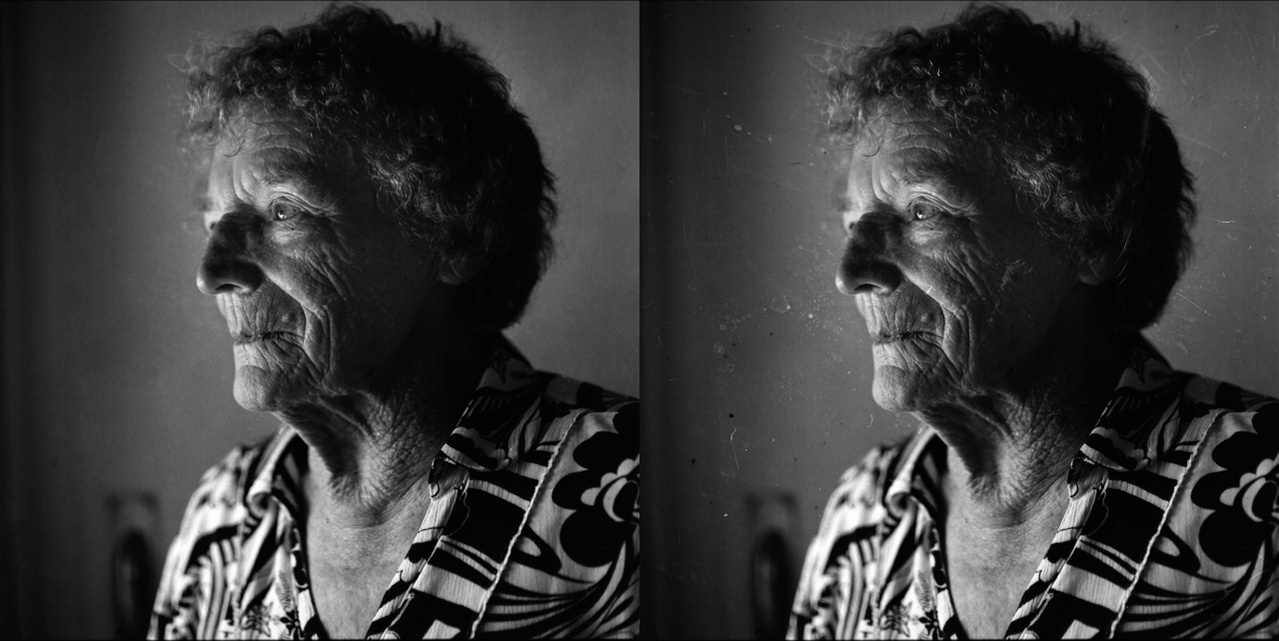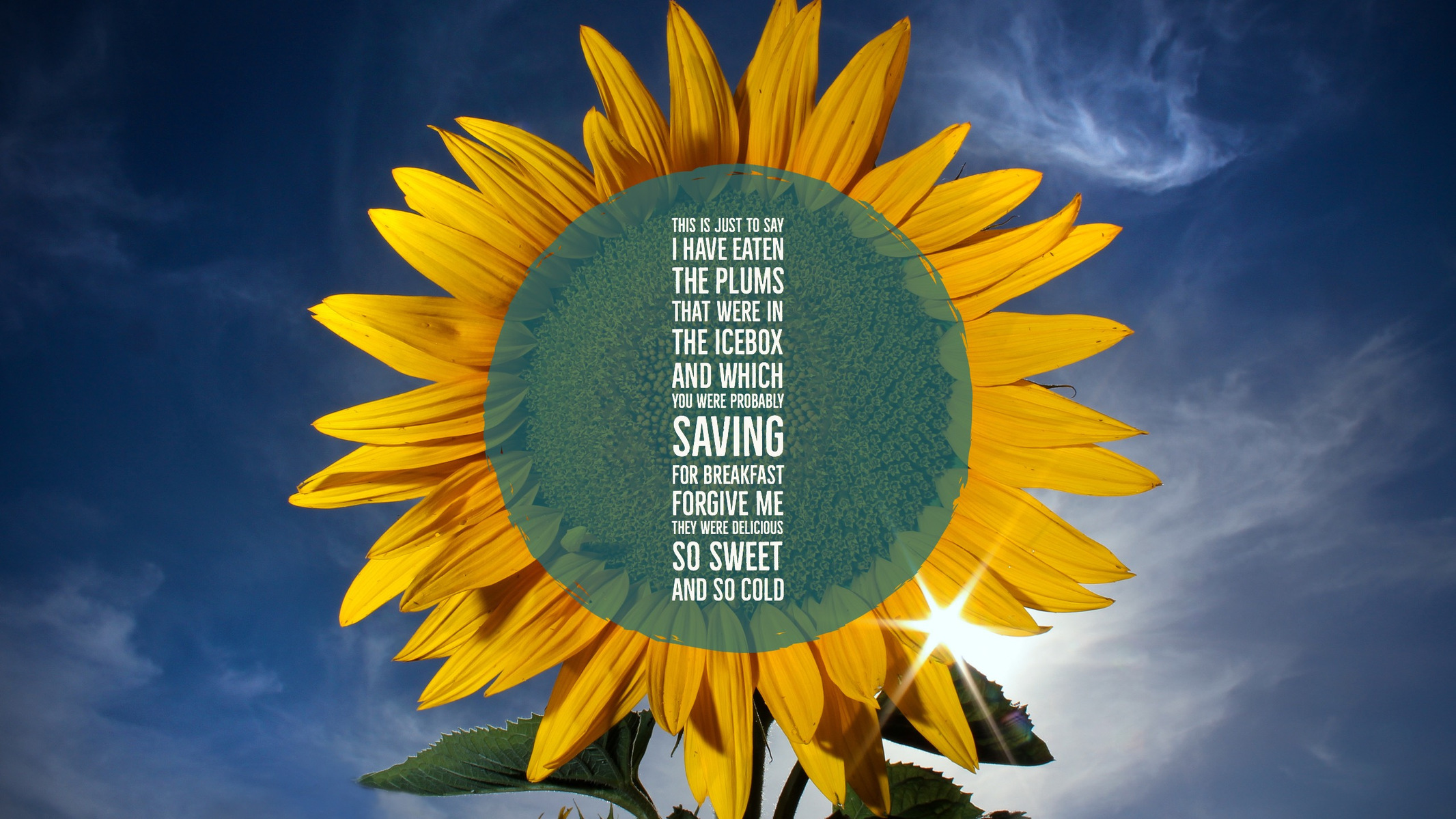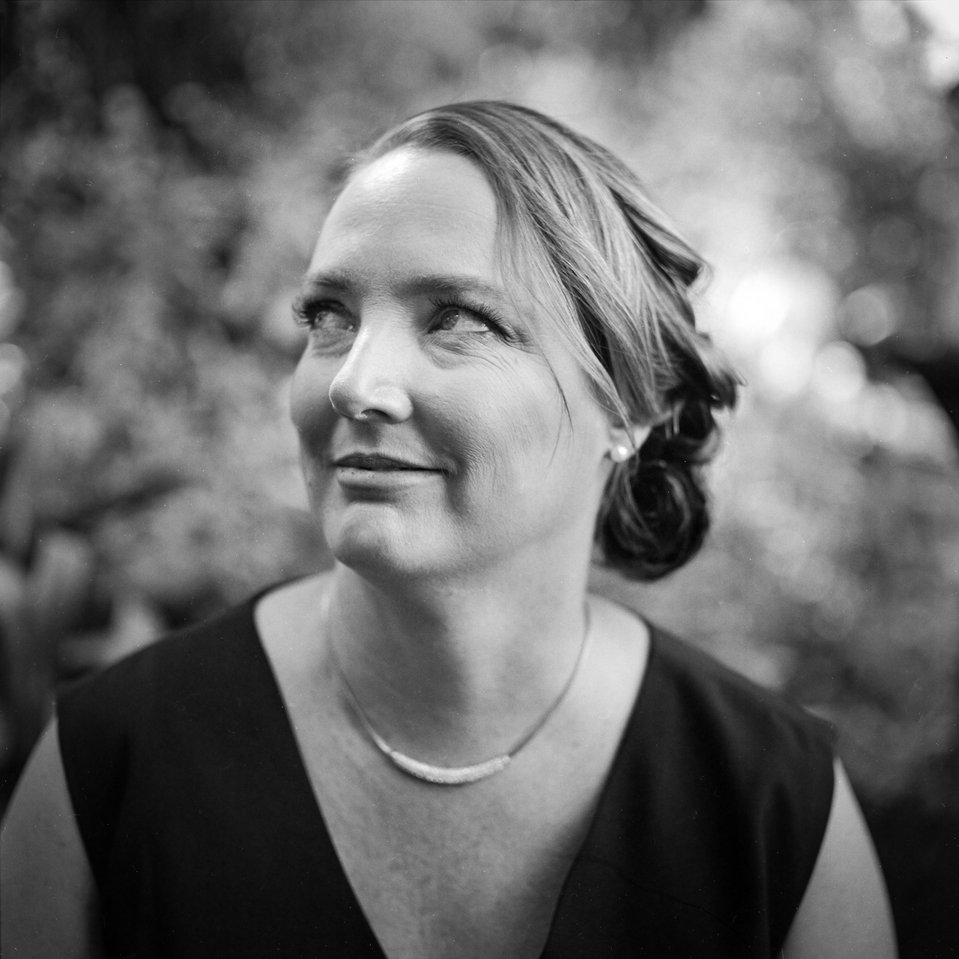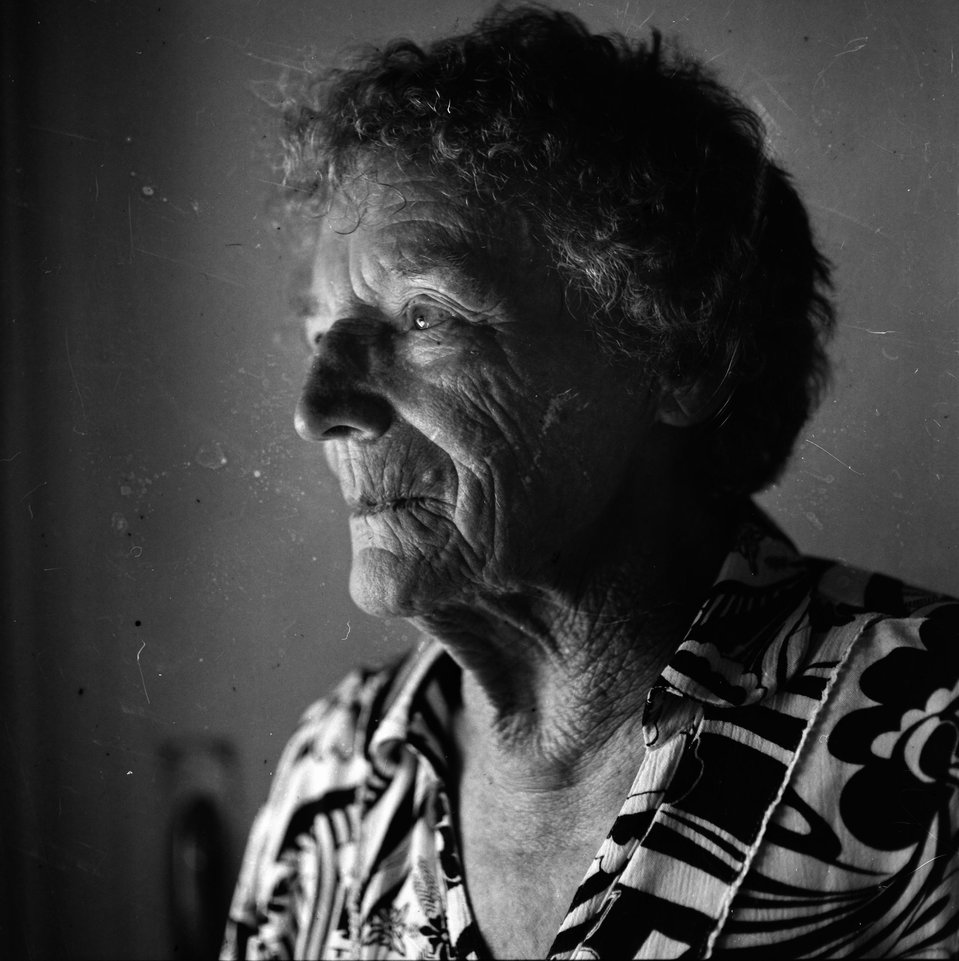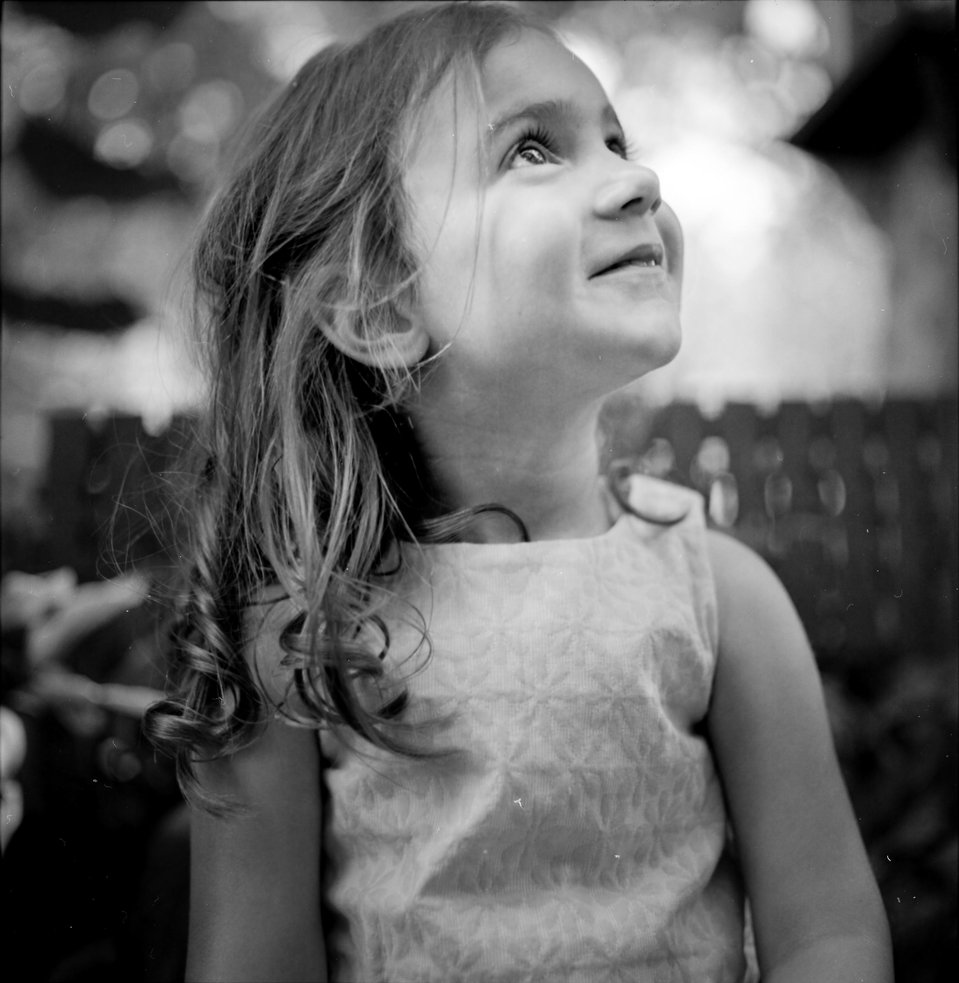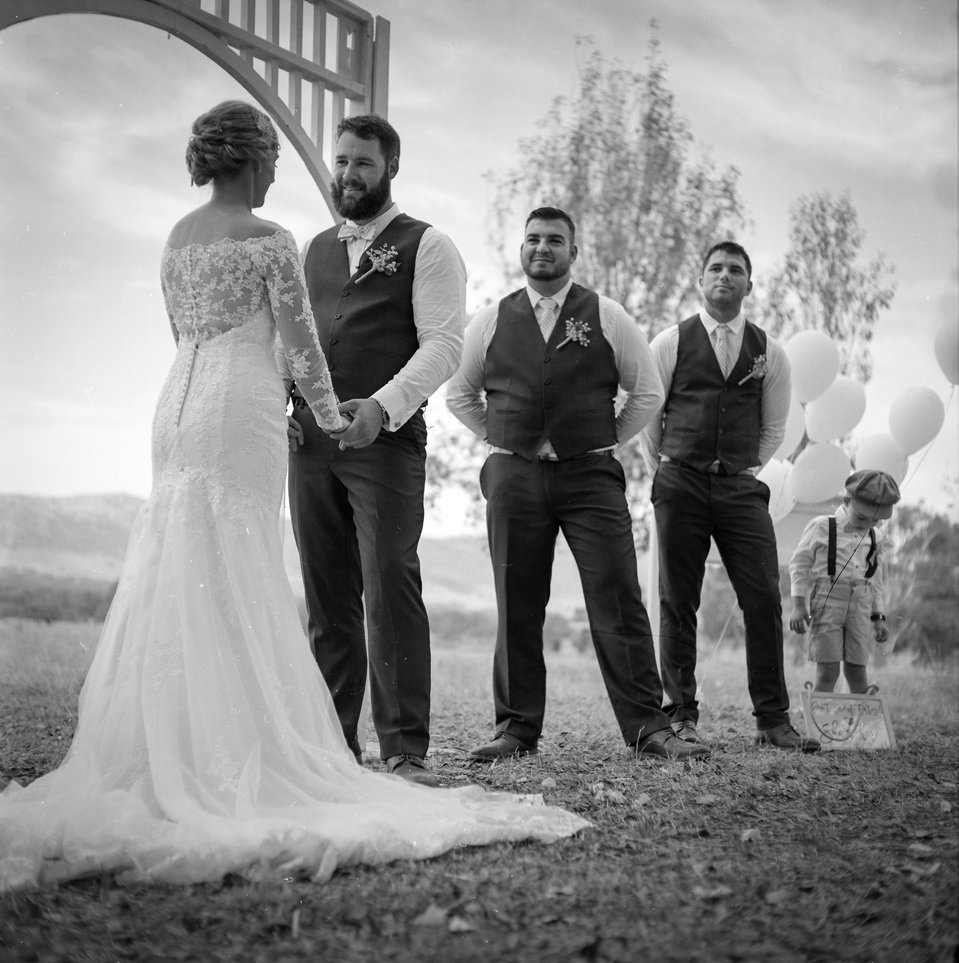One of the best things about film is the fact that it is physically real. In a world of so much digital artifice, of images captured in pixels and enhanced by algorithms, film’s appeal is a layer of realism that - as yet - cannot be replicated; a certain honesty. Of course, photo manipulation isn’t something new to digital imagery, nor is the phrase ‘the camera never lies’ uttered without at least a hint of irony. But it’s the way that film carries the process within it, sometimes physically etched into its surface. Take Great Grandma. I’d resisted Photoshopping out the imperfections, as they added a layer of interest and told their own story (not just of the manual process of developing in my kitchen, but of an epic battle to get the damn film on the developing reel). To me, there was honesty there, an element of truth; the whole point and beauty of film. It said, this is not a sanitised collection of pixels, a soulless reflection of the truth, but instead a physical representation as flawed and complex and beautiful as the humanity it represents. Alas, indicative of our times, it seems most people assumed what was real was faked to make it look real. And after being asked too many times why I would add the effect, I got rid of it. I’m not mad about it, don’t get me wrong! We’re all tuned to view images in such a way that it was inevitable. Indeed, it was an interesting exercise to see what could be done to ‘clean up’ the image. I guess the whole thing has taught me that I need to be a little more patient and careful when it comes to handling film. Realism is one thing, but maybe there’s such a thing as a little too much.
film
caffenol
coffee
medium-format
mamiya
c330
Photoshop
editing
albury
wodonga
photography
portrait
people
black-and-white
fuji-film
JUST a handful of words, laid out carefully over a few, innocent lines, paint a scene as vivid as any picture. Without punctuation, without ostentatious language (only two words contain more than two syllables), the rhythm of William Carlos Williams’ This Is Just To Say (above) is yet dictated, the sense of a blissful summer invoked and the words so deliciously round they fill the mouth as satisfyingly as his purple fruits. To quote US photographer and critic, Minor White, “photography is a language more universal than words”. Poetry elevates even the simplest of language. And, if photography is language, then for me film photography is poetry. Photography quite literally speaks to us in a way more fundamental than we give it credit for in this fast paced world of instant imagery and instant gratification. We take it for granted, and images are thrown around like cheap words. But film? Film is art. Film dictates a different pace. Film fills each scene like so many blissful summers of childhood. Film speaks with such nuance that it sees the world and, indeed, shows the world from a different viewpoint. That, of course, sounds a little like hyperbole and a lot like my opinion. But take a look at the slides below and the images across the gallery. Better yet, take a look at the masters of analogue; Ansel Adams, Robert Capa, and Vivian Maier, to name just a few. Go on, I’ll wait. See what I mean? How beautiful is Cameron’s portrait of a wild-haired Alfred Lord Tennyson, an image that tells us as much about the man as his famed lines of poetry? How much depth and nuance is there to be heard in Adams’ The Tetons and the Snake River? Perhaps it’s the natural process, the way light lands on a strip of emulsion; but it’s also its fallibility, the imperfections of the process that reflect something much more human - soul. A photographer sees and reflects. But I am always surprised by what an image seems to say as the negative first hangs up to dry and then appears in its finished form; forming visual rhythms and riffing rhymes as they bare that inner light. Be it wedding, family, portraits, even the brutal reality of war photography, film is timeless, it is real, and it knows its own voice. And that, to me, is pure poetry.
film
photography
mediumformat
caffenol
poetry
albury
wodonga
“YOU must have something to say.” It’s hard to argue with David Alan Harvey, writing in Advice from Magnum Photographers, a free guide recently released to celebrate 70 years of Magnum Photos. Years ago, when I first started working as a features writer, one of the best pieces of advice I was given was to look at every piece of writing and think, “so what?” Why should someone, looking at this, care, especially if I can’t think of a reason to myself? At first glance it’s even a little disheartening; what if I don’t have anything to say at all? But I think that’s missing the point somewhat. It’s not about making every image a powerful, life-changing moment (though, wouldn’t that be nice?), but at least thinking about the moment itself before releasing the shutter. Photography, Harvey continues, is “now clearly a language. As with any language, knowing how to spell and write a grammatically correct sentence is, of course, necessary. But, more importantly, today’s emerging photographers now must be visual wordsmiths with either a clear didactic or an esoteric imperative. Be a poet, not a technical writer.” Sitting here, trying to write a first blog post, it’s not always easy to know what it is you want to say, let alone know whether it’s worth saying or whether people will want to listen. I’ve spent years as a features writer, I’ve got a literature background and have dabbled in poetry. Yet, each time I start to write there’s that niggle of self-doubt, a doubt that is in no way diminished in photography, especially as a relative newcomer. And that is why I want to start with my own piece of advice, particularly for those thinking of starting out in film photography and developing themselves, and a piece of advice that I luckily stumbled upon but wish someone had told me. And that’s start with medium format photography, such as with a twin lens reflex (TLR). Aside from looking stunningly beautiful, with twin pieces of glass twinkling unblinkingly at you, delineating the behaviour of light in their reflections, they are surprisingly easy to use. 120 film is big and alien, but gives you (generally) just 12 shots and a decent size film to handle in the dark (I think more on this later). Twelve shots. Most now would think nothing of firing off 100 digital shots and hoping one will work. But now you have just 12 goes to get it right - and every shot actually costs! But, that’s the beauty. You have to step back, think, compose, create. The TLRs I own have beautiful, large viewfinders that I actually find making composition a whole lot more natural than through a traditional viewfinder. That’s where the language of photography, in my opinion, really begins to sing. And what depth, what tone, what texture in that voice! Because at any moment you could lose it all - from incorrectly exposing the image, to transferring the film and developing it. But when you see a beautiful, clean, sharp negative hanging, the film says so much more that any words you could ever have hoped to articulate about your photography. I’m the first to admit I have a long way to go. And there are a couple of exciting projects that look like they could take off (so, stay tuned!). So, here’s to hoping that as the blog grows I continue to have something to say, or, at the very least, my photos will be able to speak for themselves.
photography
film
TLR
caffenol
developing
Magnum
Magnum-Photos
Twin-Lens-Reflex
writing
creative
creating
